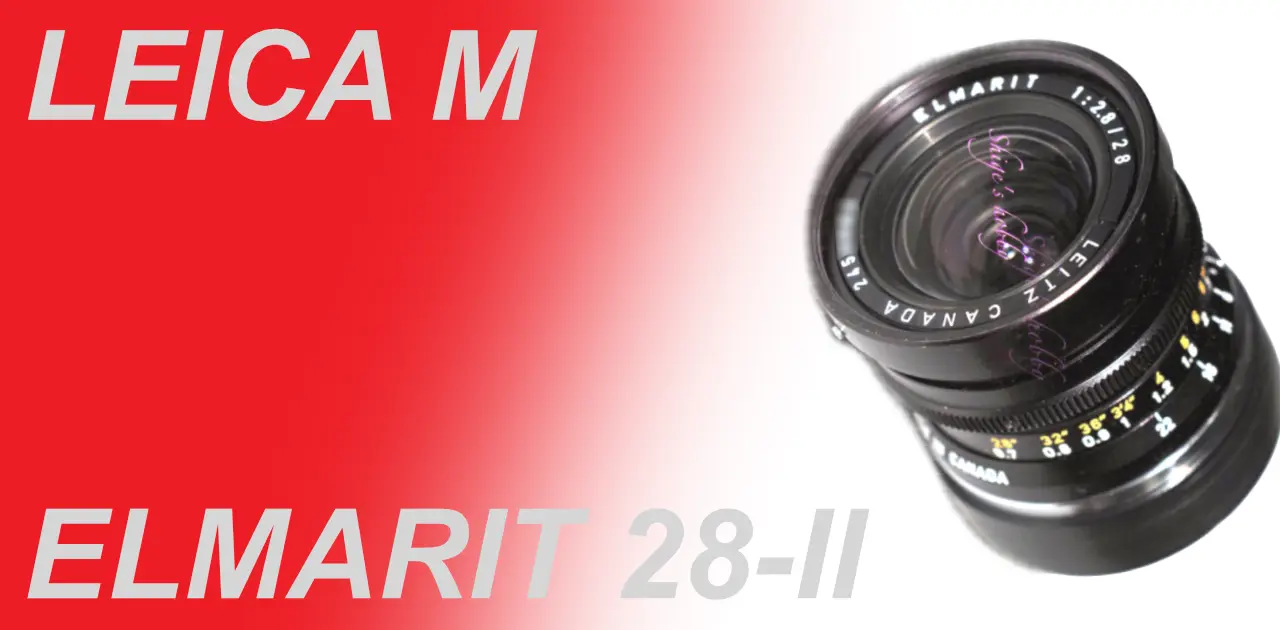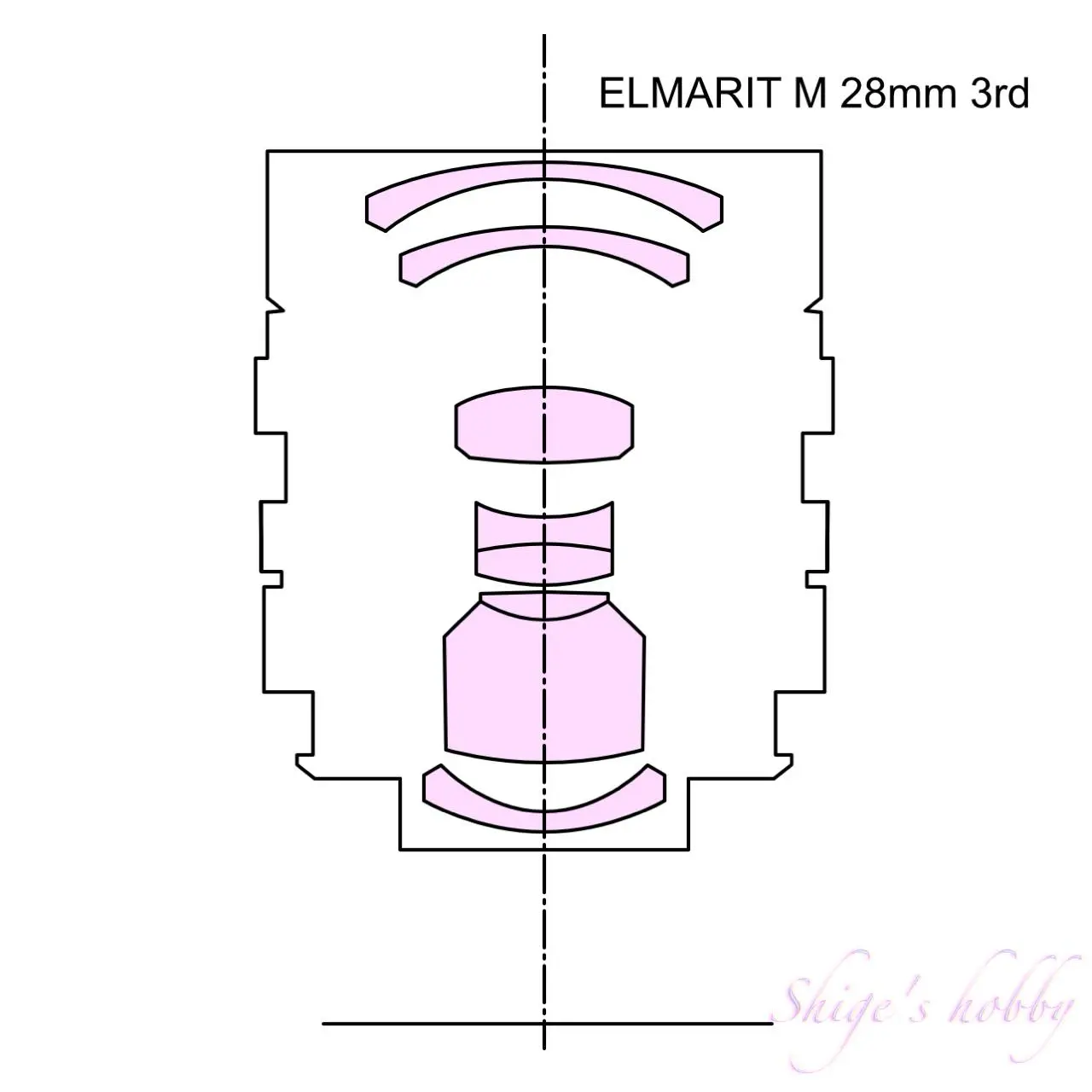ELMARIT M 28 2nd with Stopper

A review and Photo example of the ELMARIT M 28mm F2.8 (2nd).
Table of contents
Gallery
- Sample photos taken with the LEICA M-P typ240 and LEICA M6 +E100VS
Review


1.Usage
The second-generation Elmarit M used a retrofocus lens structure, and about 7,000 were manufactured over the nine years from 1969 to 1978. Due to the retrofocus lens structure, the overall length of the lens is about 3 mm longer than the first-generation Elmarit.
The second-generation Elmarit has an early model with a stopper at the infinity position of the focus ring, and a later model without a stopper.
The lens hood is 12501, which is the same as the Super Angulon-M 21/3.4 and the first-generation Elmarit M 2.8/28.
Because the lens mount has an old structure, it is not compatible with Leica’s 6-bit lens recognition code modification.
Because the lens is lightweight, the stopper has little practical meaning in rangefinder cameras, where the lens does not expand under its own weight, and is more decorative, but it gives the impression that it is a well-made tool. Judging from the shape and color of the stopper parts, it is believed that the stopper part of the second generation is a reused part from a later model of the first-generation Elmarit 28mm, and when that part became scarce, it is speculated that it was changed to a lens that did not have a stopper and only had a finger grip on the focus ring, which is the more widely available lens.
2.Overview
The second-generation Elmarit M is a lens that is already over 50 years old, but there was no problem with its depiction.
I was looking at the stock photos for the first time in a while and found that it was a very good lens with sharp depiction. I liked the soft, wet depiction of the first-generation Elmarit, so I kept it, but the depiction of the second-generation is also attractive.
The lens I was using was a 2459xxx, manufactured in Canada in 1970. There was a little rattle in the lens barrel, but the lens was clear and the aperture worked normally. It was a somewhat rare lens with the lens stopper mentioned above, but the depiction seemed to be no different from the second-generation Elmarit, so I used it for a while and then let it go.
3.Summary
The early models with stoppers seem to have been produced in small numbers and command a premium price on the used market.
There is no difference in the lens construction of the second-generation ELMARIT itself, so if you want to enjoy the unique characteristics of the lens, it is better to prioritize the condition of the lens over the presence or absence of a stopper.
Specification and Competitor
As mentioned on the page for the first Elmarit, the lens barrel of the second-generation Elmarit with a stopper is different from that of the first-generation Elmarit. Since the lens configuration is completely different, there may be some parts that are reused, but not everything is the same.
The R-mount Elmarit with the same name has undergone two design changes, while the M-mount has undergone five design changes, so there are frequent model changes. I have used all M-mount Elmarits except the fourth-generation Elmarit, and I have no complaints about the lens performance of any of them. The reasons for the design changes are thought to be as follows.
- First generation to second generation, retrofocus lens structure
- Second generation to third generation, general cost reduction
- Third generation to fourth generation, modernization of the lens barrel and lens structure
- Fourth generation to fifth generation, compact size due to the use of aspherical lenses


| Items | ELMARIT 1st | 2nd | 3rd |
| Focal length(mm) | 28 | 28 | 28 |
| Max aperture | 2.8 | 2.8 | 2.8 |
| Min aperture | 22 | 22 | 22 |
| Lens Construction | 8 | 8 | 8 |
| Aperture blade | 9 elements in 6 groups | 8 elements in 6 groups | 8 elements in 6 groups |
| Min distance(m) | 0.7 | 0.7 | 0.7 |
| Lens length(mm) | 42 | 45 | 48 |
| Max diameter(mm) | 52.5 | 52.5 | 52.5 |
| Filter Size(mm) | 48 シリーズ7 | 48 | 49 |
| Lens hood | Square hook type hood 12501 | Square hook type hood 12501 | Square pinned hood 12536 |
| Lens mount | LEICA M | LEICA M | LEICA M |
| Weight(g) | 242 | – | – |
| Release date | 1964-1966 | 1969-1978 | 1979-1991 |
| Production numbers | 3,200 | 7,050 | 17,115 |
Reference links
- Description page of ELMARIT-M 2.8/28-1st by LEICA Wiki
- Introduction page for the 2nd generation ELMARIT-M 2.8/28 (link in Shige’s hobby)
- Introduction page for the 3rd generation ELMARIT-M 2.8/28 (link in Shige’s hobby)
- Introduction page for the 5th generation ELMARIT-M 2.8/28 ASPH. (link in Shige’s hobby)
Update history
- 2025.4.21
- 2024.11.10
- 2024.02.27
- 2022.05.01

Leave a Reply